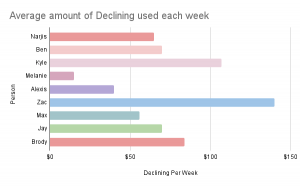It is the human interactions with the earth’s natural systems that are causing the negative change. Of course, to maintain a healthy environment we must use some of the earth’s resources; although, it is the overuse that is cursing the problems. The global issues we are facing are a direct cause of the style choices we humans are making to live a comfortable, consumerist life. We are currently in a state of overshoot, meaning we are using more resources than the earth can produce in a year. In 2018, the ecological footprint was 2.4 times greater than the biocapacity. Essentially, in 2018, we were using 2.4 times the amount of resources the environment could produce in a year. Calculations can be figured out by dividing the footprint by biocapacity.
It is time to make small changes to our lifestyles to drastically slow the rate of the earth’s change and maintain the Earth for future generations. Some simple changes are rooted in expanding our knowledge, such as learning what can be recycled and composted. Many individuals think that plastic and paper can be thrown in the now common, zero sort recycling. This belief is not true; only particular types of plastics can be recycled if they are clean. Composting will also reduce the amount of waste that is sent to landfills and will promote healthy soil and crops. Along with these changes, individuals can limit laundry and wash in cool water to cut down on electricity usage. The changes mentioned above are minor; but if every person began to practice them, we could seriously reduce negative change. In a consumerist society, it seems hard and maybe impossible to reduce our intake of products, yet it is very possible.




